Physics, CO2 storage capabilities, performance, field management, and usability form the core pillars for the development of the Intersect™ high- resolution reservoir simulator. The release of Intersect 2024.1 delivers many key features and updates reflecting these focus areas.
Key release highlights
Fractures in conventional and unconventional reservoirs can now be simulated using the embedded discrete fracture modelling (EDFM)!
The Intersect simulator can now simulate fractures in conventional and unconventional reservoirs through embedded discrete fracture modelling (EDFM) resulting in faster and more accurate simulation results. In tested models, EDFM ran fifty times faster, compared to alternative methods in unconventional settings.
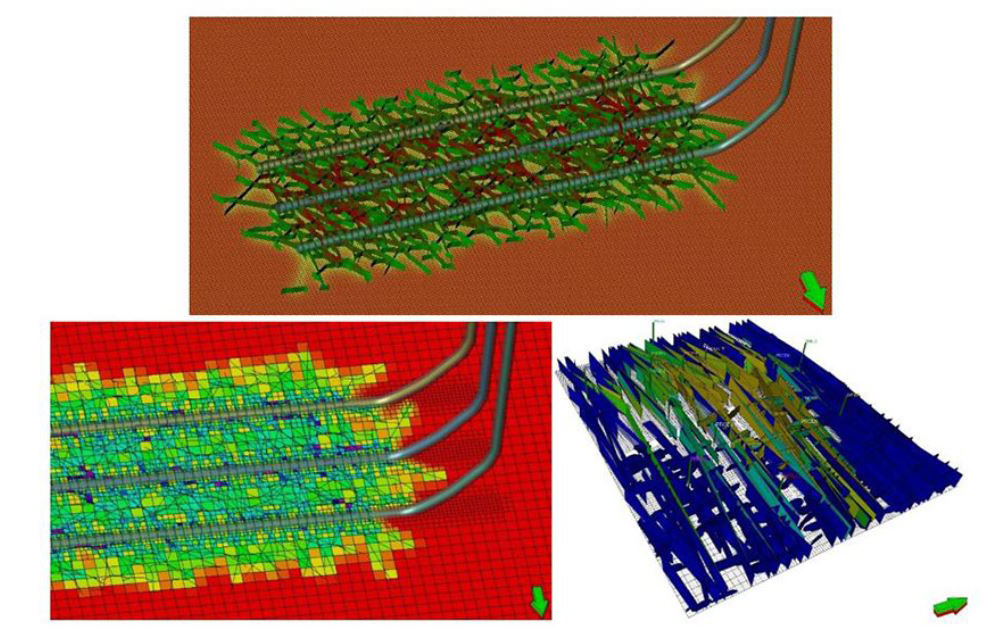
Image showing independent fracture and matrix using new EDFM method
Faster CO2 storage simulation setup
CO2 storage simulations can now be defined easily through the new CO2Store template node. Based on selected components, the template internally expands to a full PVT description including tuned equation of state parameters, component solubility in water, brine, and aqueous phase property models.
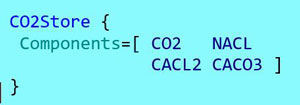
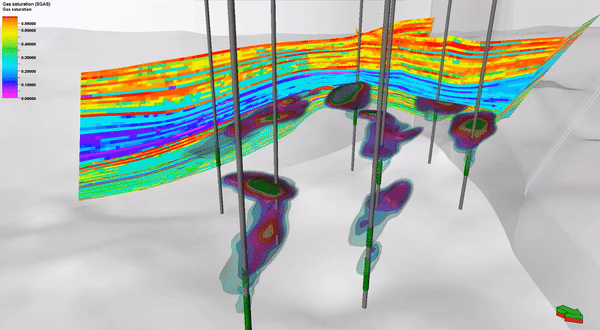
CO2 plume migration modelling for a CCUS project over a thousand years—simulated with the Intersect simulator. (Data courtesy Geoscience Australia)
Smarter generation of solubility tables for isothermal simulations using the Spycher and Pruess CO2 solubility model!
Spycher and Pruess model can now be used to calculate the CO2 solubility in the aqueous phase for isothermal models, eliminating the tedious process of creating or editing imported solubility tables.

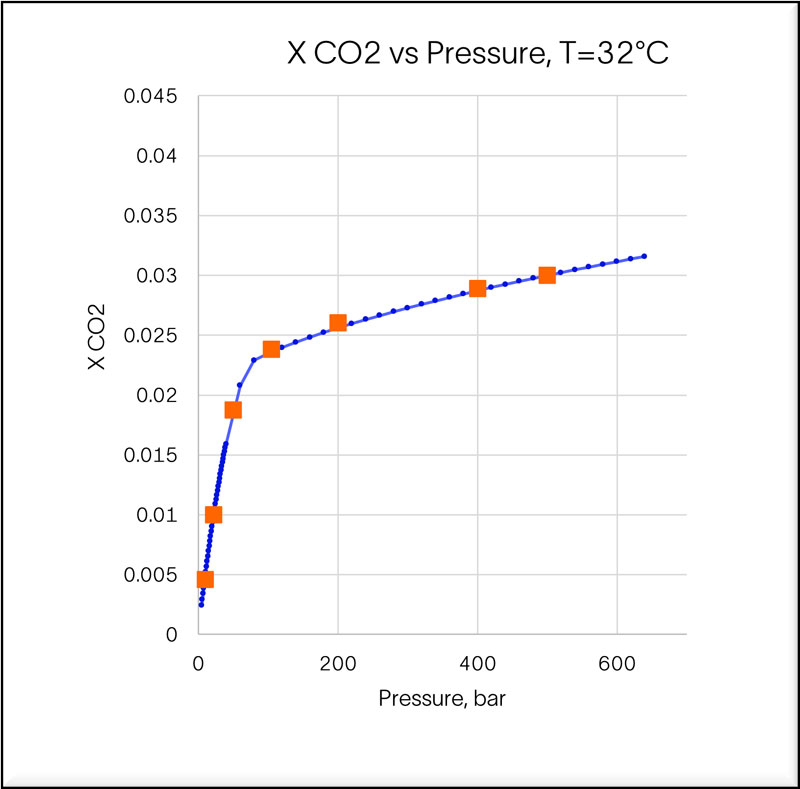
Graph showing the simulated vs observed CO2 vs pressure data
Multiscale sequential fully implicit (SFI) transport solver to speed up convergence, significantly improving performance!
The multiscale sequential fully implicit (SFI) solver has received improved heuristics to its transport solver to speed up convergence. In tested cases, an average speed increase of 30% was achieved, without any observed changes to results.
Plus, many more additional features!
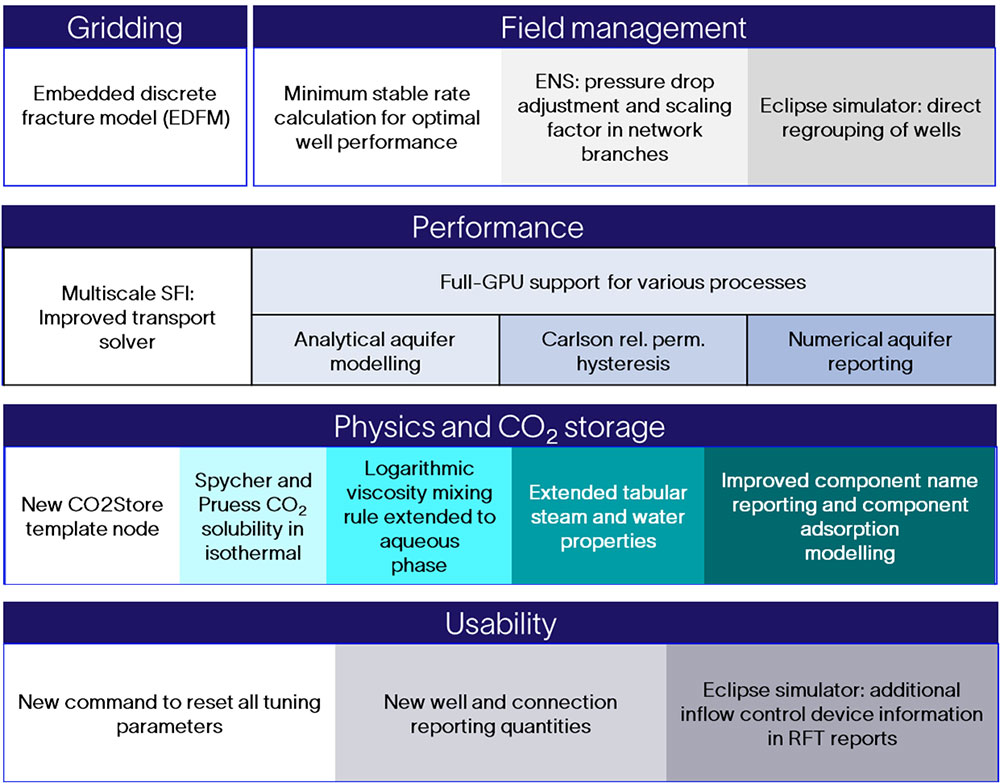
Detailed list of key features updated in Intersect 2024.1
Learn more about the Intersect high-resolution reservoir simulator
Other Key enhancements
Physics and CO2 storage
- Component adsorption can now be modelled as a function of composition via tabular input. This can be done independently for each phase, and an inaccessible pore volume can be specified. Available in thermal simulations, this option can be used to model phenomena such as the adsorption of a water-based surfactant.
- The logarithmic viscosity mixing rule has been extended to aqueous phase viscosity. In thermal simulations containing water-soluble hydrocarbons, brine, and water components it can be used to achieve a better match to experimental data in mixtures of components, with heterogeneous viscosities such as bitumen and solvent.
- Water and steam properties based on the International Association for the Properties of Water and Steam Industrial Formulation 1997 (IAPWS97) formulation can now be used with an extended range. The option is valid for pressures up to 1,000 bar and temperatures from 273.15 to 1,073.15 K.
- Reporting for summary, and 3D-related properties featuring component names, has been enhanced so that they can be named explicitly, enhancing usability in conjunction with post-processors.
- You can now specify the order of components when defining aqueous phase composition versus depth (AMFVD) information.
Performance
- Analytical aquifer types (Carter-Tracy, Fetkovich, and constant flux) are now supported for full-graphics processing unit (GPU) simulation.
- The Carlson relative permeability hysteresis model is now supported for full-GPU..
- Reporting for numerical aquifers is now supported in GPU simulations. This includes reports such as rate and cumulative fluxes summary vectors.
Field management and usability
- A command to reset all tuning parameters to their default state has been introduced. It provides an effortless way to restore default controls to a simulation and, in combination with the AutomaticTuning functionality, may improve convergence of models that were previously heavily tuned.
- A minimum stable rate (MSR) can now be calculated and used in the control logic of wells. It can help limit operations to areas of optimal well performance and efficiency and avoid premature closure of wells during allocation.
- Pressure drop adjustment and scaling factor options are now available in runs coupled to the Eclipse™ network simulator (ENS). This enables the use of a reduced set of hydraulic tables to represent multiple network branches.
- Several new well and connection reporting quantities have been introduced to cover combinations of flow rates and cumulative quantities of various levels (well and well-to-cell connections), phases (gas, oil, and water), and conditions (surface and reservoir).
